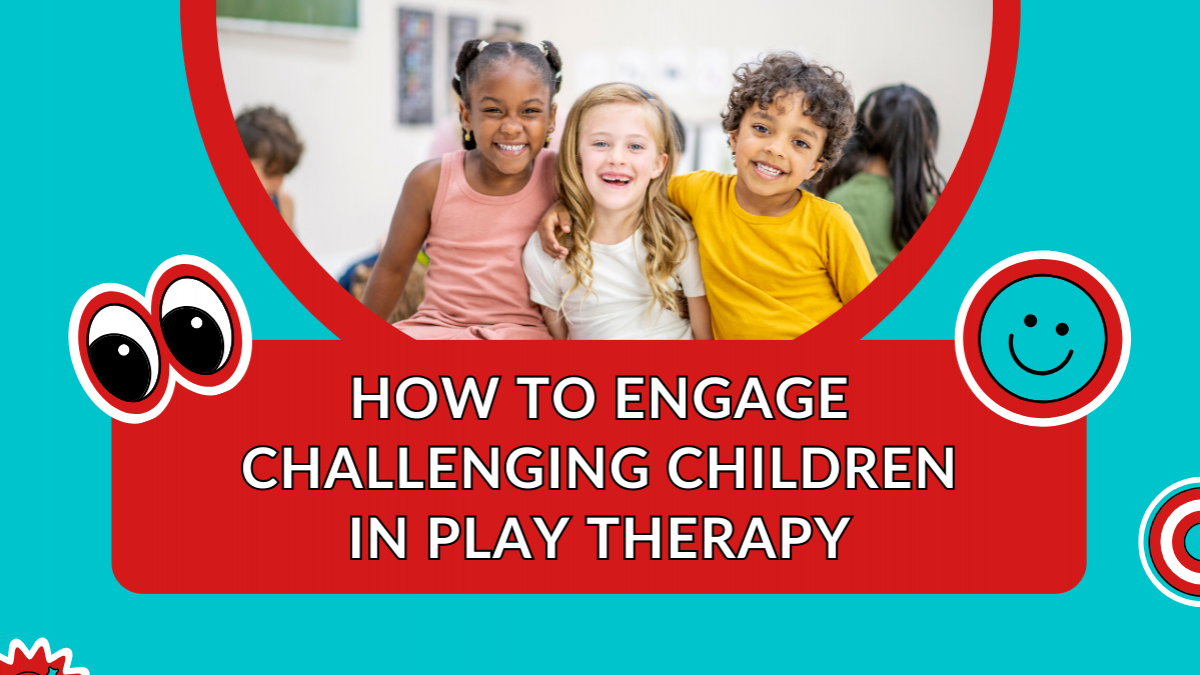How to Engage Challenging Children in Play Therapy

When it comes to engaging children who seem unreachable in play therapy sessions, every therapist knows the struggle. Misunderstanding the child’s actions or missing subtle cues can significantly affect the therapy’s direction and effectiveness.
Just like identifying themes in play therapy is crucial for understanding and aiding your clients, knowing how to engage the most resistant children is equally vital for their therapeutic journey. Here, based on insights from the renowned play therapist Liana Lowenstein, are five strategies to help you turn therapy challenges into breakthroughs.
Understanding the Heart of the Matter: Why Some Kids Are Just Harder to Reach
Have you ever found yourself puzzled, maybe even a little frustrated, trying to connect with a child who just doesn’t seem to want to open up? You're not alone. Liana sheds light on this all-too-common dilemma, reminding us that a child’s reluctance to engage is a form of communication, not defiance. From family dynamics to societal stigma, there's a world of factors influencing their openness. Remember, understanding the 'why' behind their walls can be the first step in helping them dismantle those barriers.
Building the Foundation: The Power of Relationship
Before we dive into the toolbox of strategies, Liana emphasizes something vital—none of these strategies work without the magic ingredient: a strong therapeutic relationship. It's about using ourselves, our tone, our expressions, and our words to build a bridge of trust. It’s the warmth, respect, and genuine connection that turns the key to engagement.

Game On: Creative Play to Break the Ice
Now, onto the fun part! Liana suggests turning to games as a way to lower those defenses. For instance, the "Red or Black Card Game" isn’t just a game; it’s a clever conduit for expression and connection. Through the simplicity of choosing cards, children begin to open up, sharing bits and pieces of their world, one question at a time. Imagine the possibilities as you shuffle that deck!
Art Speaks Louder: Non-Verbal Communication Techniques
For those clients who find words a bit tricky, art offers a canvas wide enough for their feelings. The "Messages in Art" technique is a beautiful reminder that expression goes beyond words. Through glitter, paint, or clay, children communicate in hues and textures, telling us their stories in a language all their own. It’s therapy, unspoken yet profoundly heard.
Bringing Stories to Life: Bibliotherapy and Storytelling
Liana highlights how bibliotherapy and storytelling can serve as mirrors for children, reflecting their own experiences through the adventures of characters. Whether it’s a book that tugs at the heartstrings or a TED Talk that sparks an idea, stories have a way of sneaking past barriers, whispering to the child, "You are not alone."
Wrapping Up Our Chat
It's clear that engaging hard-to-engage children is less about a secret formula and more about patience, understanding, and creativity. Whether it’s through a game, a brushstroke, or the pages of a book, each child’s path to engagement is unique. Remember, the key lies in being attentive to the child's play choices, emotional expressions, and the subtle shifts in their play behavior. With these insights, therapists are well-equipped to navigate the complexities of play therapy with even the most unreachable children, fostering an environment where every child feels seen, understood, and supported in their therapeutic journey.
Resources: Liana Lowenstein website
Categories: : Expressive Arts, Play Therapy, Play Therapy Themes, Podcast, Therapeutic Rapport
 Cathi Spooner
Cathi Spooner 
